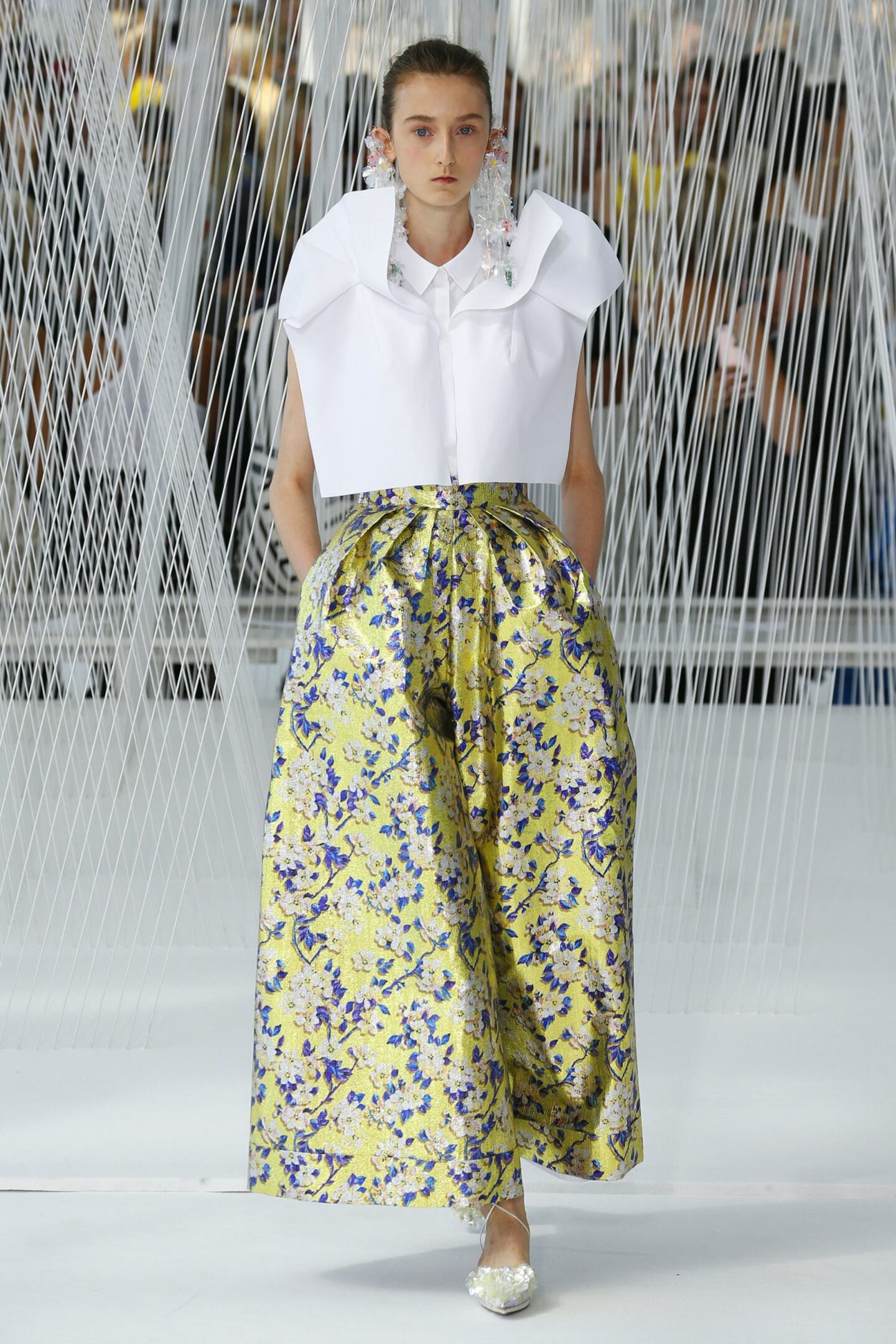
The Business of Fashion
Agenda-setting intelligence, analysis and advice for the global fashion community.

Agenda-setting intelligence, analysis and advice for the global fashion community.

NEW YORK, United States — It's hard to take a bad picture at a Delpozo runway show. Creative director Josep Font's three-dimensional constructs lend themselves to creating the sharpest of images. Just consider the origami pleats jutting out from an off-the-shoulder top, the giant raffia flowers arranged on the front of a sweater, and a sculpted dirndl skirt built on the bottom of an apron dress.
In Font's case, decisions about <span id="1508491164453160"><a definition="Fabric is the blank canvas on which fashion creates. This is the starting point where anything goes. Cloth can be woven or non-woven, knitted or felted fibres and ranges from cotton to organdie, silk to georgette, pannier to jersey, tweed, velvet and more, coming in every spectrum of colour, weight and print imaginable. " fashionary-popover="" href="http://www.businessoffashion.com/education/fashion-az/fabric" summary="The blank canvas on which fashion creates. Cloth can be woven or non-woven, knitted or felted fibres. Cotton to organdie, silk, georgette, pannier, jersey, tweed and velvet in all colours, weight and print." target="_blank" title="Fabric">fabric</a></span> are as important as to where to place a <span id="1508491164920603"><a definition="Peplum comes from a Greek word for 'tunic' and is an almost skirt-like frill or addition. They were once fitted to a waistcoat or doublet, but now to a woman's bodice, extending it below the waistline. " fashionary-popover="" href="http://www.businessoffashion.com/education/fashion-az/peplum" summary="From the Greek word 'tunic' its an almost skirt-like frill, or addition once fitted to a waistcoat, doublet and later to a woman's bodice that extends below the waistline." target="_blank" title="Peplum">peplum</a></span>. There is something almost scientific about his work.
The heavenly colour pairings don't hurt, either. Cornflower blue and sunset orange, lavender and lemon-lime, periwinkle and buttercup yellow were all shown against a chalk-white backdrop, the model's ears dangling with streaming clusters of floral paillettes that caught the late-morning light just so. Backstage, the designer said that light was indeed the driving force in this collection, inspired in part by Korean-American artist Soo Sunny Park's mesmerising iridescent Plexiglass and mesh installations.
But while Font’s head-turning shapes may be at the forefront of the conversation, what is perhaps more interesting about his process are the materials he uses to sculpt them. For instance, this collection incorporated several weights of linen. A lighter version was softly moulded into curved-pleat peg-leg trousers, while a stiff, denser variety was used to form ballooning bell sleeves. In Font’s case, decisions about fabric are as important as to where to place a peplum. There is something almost scientific about his work.
From where aspirational customers are spending to Kering’s challenges and Richemont’s fashion revival, BoF’s editor-in-chief shares key takeaways from conversations with industry insiders in London, Milan and Paris.
BoF editor-at-large Tim Blanks and Imran Amed, BoF founder and editor-in-chief, look back at the key moments of fashion month, from Seán McGirr’s debut at Alexander McQueen to Chemena Kamali’s first collection for Chloé.
Anthony Vaccarello staged a surprise show to launch a collection of gorgeously languid men’s tailoring, writes Tim Blanks.
BoF’s editors pick the best shows of the Autumn/Winter 2024 season.